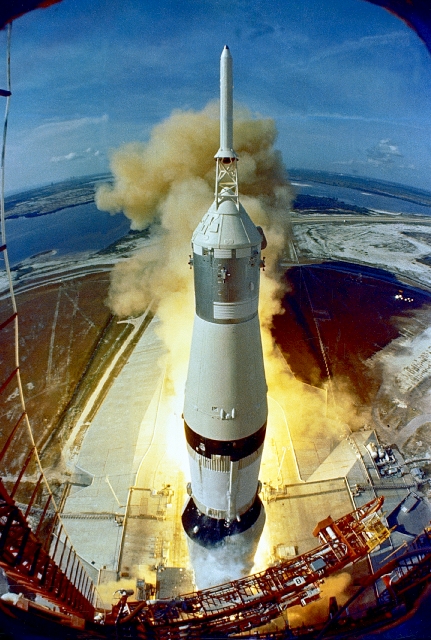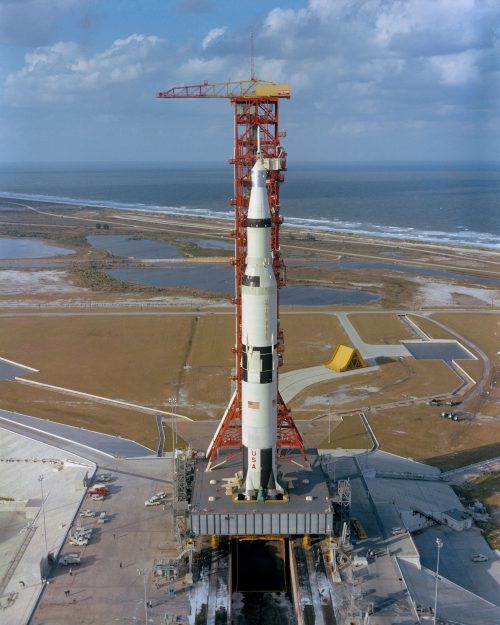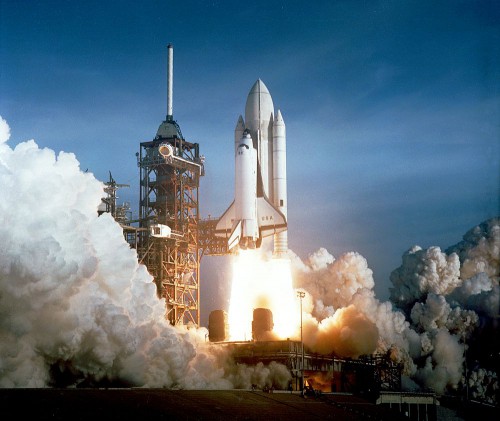
In a strange twist of irony, Pad 39A at the Kennedy Space Center (KSC) in Florida was not originally meant to be named “39A” at all. Having supported its first launch, 50 years ago, last week, the iconic pad—which saw the first teams of human explorers leave Planet Earth, bound for the Moon, together with America’s first space station and dozens of Space Shuttle missions—occupies a roughly octagonal footprint on the marshy landscape of Florida’s Merritt Island. More than a half-century ago, blueprints called for the construction of up to five launch pads, potentially labeled 39A through 39E, which might have run sequentially from north to south. As circumstances transpired and planning changed, only two pads were brought to operational service. The original 39A complex was never built and in 1963 the site which would have been 39C was renamed the “new” 39A. Today, after recently seeing off the 106th launch in its illustrious history, for Pad 39A an exciting future lies ahead.
Originally developed in the late 19th century, and later used for the testing of captured German V-2 missiles, the site formally entered the NASA consciousness in 1962, when 131 square miles (340 square kilometers) of sand and scrub, as well as 87 square miles (230 square kilometers) of submerged land, were purchased or negotiated at a total cost of $71.8 million. Launch Complex (LC)-39 was intended as part of a vast infrastructure, which included the Launch Control Center (LCC) and Vehicle Assembly Building (VAB), in support of America’s goal to land a man on the Moon before 1970. A 3.5-mile-long (5-kilometer) “crawlerway” of imported Mississippi river-gravels extended from the VAB to the two primary pads, which were located 8,700 feet (2,650 meters) apart, so that a launch disaster would not risk wrecking the other.

On 25 May 1966, Pad 39A received its first major client, when a full-scale mockup of the 363-foot-tall (110.6-meter) Saturn V—dubbed “500F”—was rolled from the VAB to the launch site for several months of fit-checks and propellant-transfer evaluations. It was removed from the pad in mid-October, with an expectation that the first flight-ready Saturn V would launch in the first half of 1967. However, the deaths of Apollo 1 astronauts Virgil “Gus” Grissom, Ed White and Roger Chaffee on 27 January forced a lengthy period of downtime and it was not until 9 November 1967 that Apollo-Saturn-501 (AS-501), bearing the unmanned Apollo 4 Command and Service Module (CSM), finally took flight. The nine-hour mission was a remarkable success, demonstrating that the Apollo spacecraft could function in the radiation and thermal extremes of deep space and validating the Saturn V as the machine which would deliver humans to the Moon.
In its first launch, Pad 39A had set its own bar of excellence extremely high. Apollo 4 was the first of 106 missions to date which have vaulted skywards from this patch of Florida. On 4 April 1968, another Saturn V carried the unmanned Apollo 6 spacecraft into orbit. Although the rocket suffered severe pogo-like oscillations during ascent, corrective actions over the following months led to astronauts Frank Borman, Jim Lovell and Bill Anders becoming the first humans to launch from Pad 39A on 21 December 1968. They flew Apollo 8 on a six-day voyage, around the Moon, becoming the first men to travel to lunar distance.
Video Credit: NASA
Over the next four years, a further nine Saturn Vs launched from Pad 39A. In March 1969, Apollo 9 astronauts Jim McDivitt, Dave Scott and Rusty Schweickart tested the entire Apollo spacecraft—command, service and lunar modules—in low-Earth orbit for the first time, but the pad’s most historic launch of all came on 16 July, when Neil Armstrong, Mike Collins and Buzz Aldrin began their voyage to the Moon and to Tranquility Base. All but one of the Moon-bound Apollo missions launched from Pad 39A, although not entirely without incident. Apollo 12, which rose into thundery skies in November 1969, saw the Saturn V twice hit by lightning, whilst unlucky Apollo 13 in April 1970 endured a premature shutdown of one of the rocket’s J-2 engines during second-stage flight. The final four lunar-bound flights in January and July 1971 and April and December 1972 were charmed by comparison, with Apollo 17 marking Pad 39A’s first launch in the hours of darkness. Five months later, on 14 May 1973, a Saturn V with a distinctly different look rose from the pad. It bore the lower two stages, and much of the muscle, of its predecessors, but in place of its S-IVB third stage was America’s first space station, Skylab.
With 12 missions under its belt, Pad 39A had by this stage cemented its credentials as much more than a launch complex, but a historic landmark for the human race. By the end of its first era of operations, the pad had launched 23 astronauts—four of them on as many as two occasions—and it was stood down for modification, ahead of the dawn of the Space Shuttle program. A new Fixed Service Structure (FSS) was erected and a Rotating Service Structure (RSS) were installed and much of the old Saturn V architecture was removed. On 12 April 1981, Pad 39A reverberated to the roar of three Space Shuttle Main Engines (SSMEs) and two Solid Rocket Boosters (SRBs), as Columbia transported John Young and Bob Crippen into orbit on the first mission of a new age.

It was the start of no less than 82 shuttle launches from Pad 39A. Over the next 30 years, the old complex supported some of the most pivotal missions in NASA history. All but one of orbiter Challenger’s flights originated from the pad, whilst every orbiter except Endeavour made its maiden launch from Pad 39A. Key events included the first flight of the European-built Spacelab research facility in November 1983, the first flight of the Manned Maneuvering Unit (MMU) in February 1984 and the largest single crew of astronauts ever launched in October 1985. The first shuttle-Mir docking mission, the first flight to assemble the International Space Station (ISS) and the first piloted space voyage of the 21st century all originated from Pad 39A. Dovetailed into this list have been the human records: the first U.S. woman in space, the first African-American man in space, the first non-U.S. citizen to launch into space from U.S. soil, as well as the first national representatives of Canada, Holland, Saudi Arabia, Mexico, Belgium and Israel.
All told, from the launch of Borman, Lovell and Anders in December 1968 to the launch of Chris Ferguson, Doug Hurley, Sandy Magnus and Rex Walheim aboard shuttle Atlantis’ STS-135 swansong in July 2011, several hundred spacefarers have flown from Pad 39A, including U.S. astronauts Jim Halsell and Bonnie Dunbar, who both rocketed away from the historic complex on no fewer than five occasions apiece.



